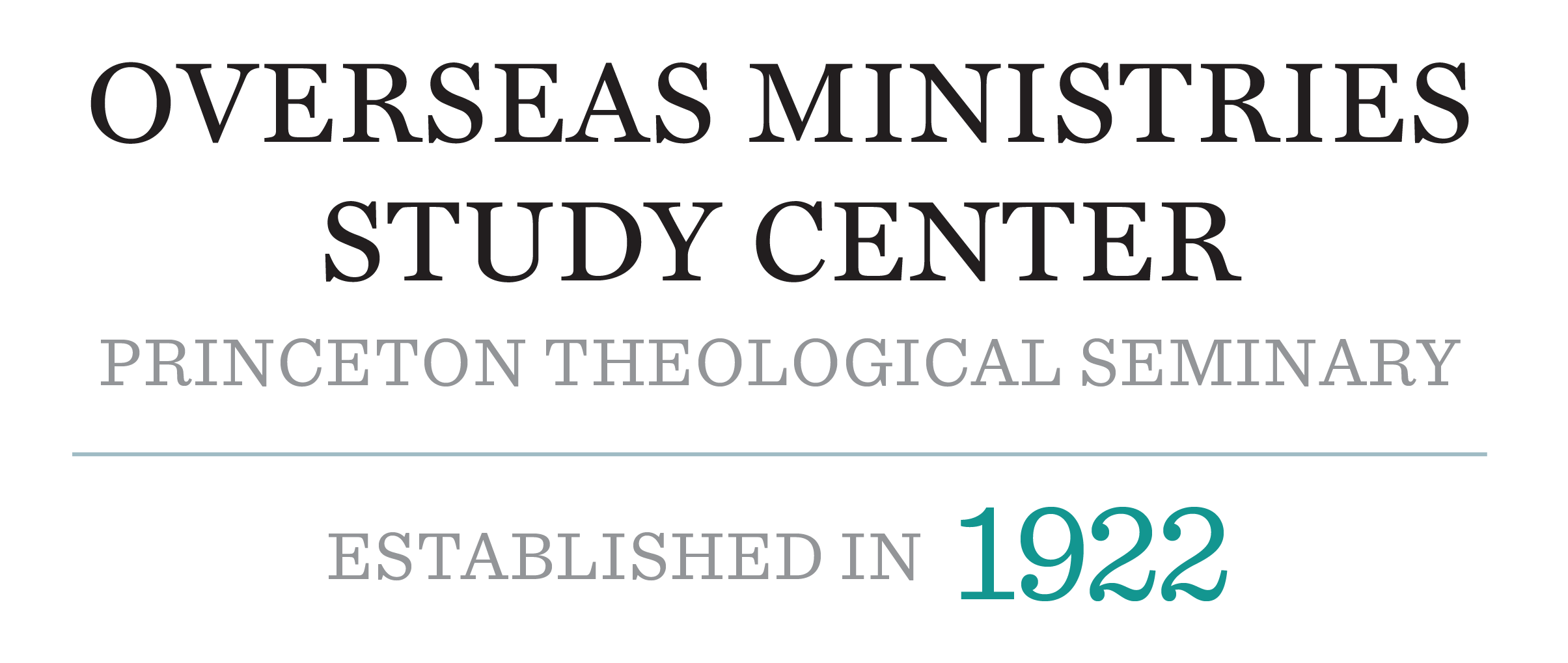By Stephen Kapinde
Stephen Kapinde is a Religion and Public Life Lecturer at the Department of Philosophy and Religious Studies at Pwani University, Kenya. He is also an associate lecturer in religion and global politics at the University of London Worldwide, UK. Dr. Kapinde holds a Ph.D. in Theology from the University of Basel, Switzerland, and a Master of Arts in Religion and Public Life from Pwani University in Kenya. He has been conducting interdisciplinary research on Religion and peacebuilding in Africa. He is also an expert consultant on Religion and counter-violent extremism in the Horn of Africa. Out of his Lamin Sanneh fellowship, Kapinde is developing a research project on “Indigenous Knowledge Systems in Counter-Political and Violent Extremism in Africa.”
Christianity in sub-Saharan Africa has engaged in peacebuilding for over a century. However, due to changing dynamics driven by technological evolution and transcultural exchanges fueled by globalization, peacebuilding missions, including counter-violent extremism, must adopt an inter-religious approach, particularly in multicultural and pluralistic societies. As we strive to incorporate inter-religious logics into peacebuilding, we must be aware of the communication barriers that may hinder these processes. Growing up in coastal Kenya in the early 1990s, we mingled with people from diverse faiths, races, and ethnic backgrounds without trouble or suspicion. My devout Christian father allowed us to attend the morning Islamic prayers (Fajr), performed between dawn and sunrise. Although he never attended the mosque, his curiosity about inter-religious dialogue and intercultural interactions became evident in the mid-2000s when he took our family to visit the Dwarikadham Hindu Temple in Mombasa, Kenya. Despite these gestures of hospitality toward other faiths, neither my father nor my siblings converted to Islam or Hinduism. However, in our extended family, some became Muslims by choice, while others are Christians by birth and practice. Reflecting on these inter-religious experiences and cross-cultural relations, I became interested in how interfaith relations and practices can foster peace and social cohesion amid violent extremism and terrorism. This phenomenon emerged in Kenya’s political landscape in the late 1990s with the bombing of the American Embassy in Nairobi on August 7, 1998. The attack claimed over 200 lives and left over 5,000 wounded (Gikunda, 2003). In 2002, Al-Qaeda terrorists struck an Israeli-owned hotel in coastal Kenya, claiming 16 lives and inflicting severe injuries, revealing the extent of terrorism in the country. Beyond these incidents, Kenya has continued to face threats from Al-Shabaab, an Al-Qaeda-linked terrorist group operating from Somalia, with the most tragic event being the massacre of 150 students at Garissa University in 2015 (Makanda, 2019).
The global response to violent extremism and terrorism has been militaristic and state-centric since the 9/11 attacks in the USA. On the other hand, African counter-violent extremism has been dominated by Western counterterrorism frameworks, strategies, and sometimes security priorities that hugely neglect historical, national, and contextual peculiarities (Oando & Achieng, 2021). These approaches intersect with liberal peacebuilding practices and approaches that undervalue indigenous knowledge systems, including religion as inferior and part of the conflict’s drivers. Conversely, in the context of conflict liberalization, scholars have underestimated the potential of religion and inter-religious approaches in conflict transformation, particularly within Kenya’s peacebuilding landscape, which is characterized by both liberal and militaristic tendencies. This situation leaves little room for religion and inter-religious dialogue in peacebuilding, despite its increasing importance in multicultural and pluralistic societies like Kenya. Reflecting on my earlier intercultural exchanges, I believe that interreligious dialogue can significantly contribute to peacebuilding by countering violent ideologies and politics.

Broadly, inter-religious dialogue is significant due to the technological and demographical changes (i.e, religious, racial, and ethnic) and global challenges associated with climate change, terrorism, and violence. African theologian and historian Lamin Sanneh (1942-2019) was key in developing inter-religious dialogue as a dialogical framework for multicultural and transcultural engagement in World Christianity (Orji, 2022). Sanneh provided the impetus for understanding the nexus between religion and culture by challenging the inbuilt Western missionary prejudices that overshadowed the authentic development of Christianity in the global south. In some instances, Sanneh critiqued the missionary presentation of Christianity as a metanarrative that fosters the exclusion of ‘others’, and thus developed intercultural hermeneutics relevant to inter-religious discourse and a transcultural mission in peacebuilding and societal cohesion (Orji, 2022).
Thus, the epistemic value of Sanneh’s intercultural hermeneutics gains credence in counter-violent extremism discourse, as different faith groups can work together positively in peacebuilding programs. Interreligious dialogue requires humility and the desire to listen to others without prejudice. As such, in Sanneh’s view, Christianity must come down and accept the need to engage with other faiths by overcoming its colonial attitude (Sanneh, 1989) and imperialism. For Sanneh, this calls for the adaptation and translation of the message in light of the social, cultural, linguistic, political, and national particularities, as some missionaries have done. However, Tsawe Chidongo (2012), in his ethnographic study of Christianity, Islam, and African Religion in Kenya, took a decolonial posture by challenging Western missionaries for packaging Christianity as a dominant culture that suppressed other cultural belief systems and values, thus undermining the inter-faith agenda. Consequently, other religions like Islam, Hinduism, and African Religions refrained from engaging Christians in addressing societal challenges (See Chidongo, 2012, p. 167). Chidongo, like Sanneh, advocates for inter-religious dialogue as a panacea for peaceful coexistence, although they have overlooked its practical limitations in a pluralistic society with competing values and interests in conflict transformation.
By positioning Sanneh’s intercultural hermeneutics, we find a language for developing an interfaith epistemology of peace. In this dialogue, the Coast Interfaith Council of Clerics (CICC) in Kenya has been at the forefront of countering violent extremism and terrorism. This interfaith group has brought together religious leaders from various faiths, including Islam (Sunni and Sufi), Christianity (Catholics, Pentecostals, and Protestants), Hinduism, and African Traditional Religion (ATR). It began in the late 1990s following politically instigated ethnic and religious conflict in Coastal Kenya. Initially, the movement sought to provide humanitarian aid while negotiating for peaceful coexistence and social cohesion. One of the convening bodies, the Catholic Church, provided experts on interfaith relations who coordinated CICC meetings and mobilized resources for interfaith programs. Since 2000, CICC has partnered with numerous secular organizations on conflict management and peacebuilding, expanding its operations nationwide with tremendous success. The greatest challenge to the internal unity of the movement arose around 2010 with the rise of terrorism and violent extremism across the country. As the state adopted a militarized response to terrorism and violent extremism, it implicitly undermined the interreligious mission by its extra-judicial approaches, including kidnappings of terror suspects and the closing of Mosques suspected of radicalization. While the government reminded the religious community of its commitment to ending terror, it did little to embrace a whole-of-society approach. The exclusion of interreligious groups like CICC complicated the prevention of terrorism and violent extremism in Kenya. Nevertheless, CICC became instrumental in mobilizing interfaith leaders, conducting seminars with youth and women on violent extremism, organizing peace caravans, and issuing press statements against violent theologies advanced by Al-Shabaab and its sympathizers.
In conclusion, while Sanneh has provided us with a language and method for engaging in interfaith peacebuilding, various challenges confront these processes. The CICC has faced numerous difficulties, including poor coordination of interfaith peace projects due to competing interests and ideologies, internal divisions and mistrust between Christians and Muslims, as well as between Christians and traditionalists, among other issues. While intercultural hermeneutics offers a space for bridging different interpretative voices, ongoing struggles over leadership and resources, and the challenge of reconciling cultural realities and biases in our interreligious interactions persist. Thus, the possibility for interreligious synodality remains a distant dream.
References
Chidongo, T.M., (2012). Towards a Dialogical Theology: An Exploration of Inter-religious Cooperation between Christianity and African Indigenous Religion among the Midzi-Cheda People of Coastal Kenya, PhD Thesis of the University of Birmingham, UK.
Gikunda, K (2003). Terrorism in Kenya. http ://web.stanford.edu /class/e297a/Terrorism %20in%20Kenya.htm.Accessed on 23 July 2024.
Makanda, J (2019). Fighting Terrorism in the Horn of Africa: The Role of Ordinary Kenyans in Kenya’s Military Intervention in Somalia and the Fight against al-Shabaab. Journal of African Union Studies, Vol. 8 (1), April, 33-49.
Oando, S. and S. Achieng, (2021). ’An Indigenous African Framework for Counterterrorism: Decolonising Kenya’s Approach to Countering “Al-Shabaab-ism”’. Critical Studies on Terrorism 14(3), 354–377.
Orji C., (2022). The Intercultural Hermeneutics of Lamin Sanneh. Journal of World Christianity, 12 (1): 1–22.
Sanneh, L., (2009). Translating the Message: The Missionary Impact on Culture. Rev. and exp. ed. American Society of Missiology Series. Maryknoll, NY: Orbis, 324 pp.



